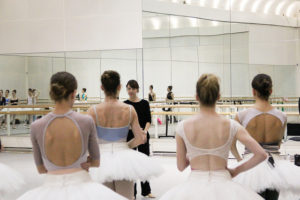What happens when you mix hip-hop and ballet?
You get hiplet, one of the more curious hybrids to make its way out of the dance world into popular culture.
Conceived by Homer Hans Bryant, the artistic director and founder of the Chicago Multi-Cultural Dance Center, hiplet (pronounce it “hip-lay” to rhyme with ballet) showcases dancers on pointe as they twist and dip to the floor in a loose translation of hip-hop movement. These young swans, largely African-American and ages 12 to 18, are purposeful, arch and knowing. (For now, the hiplet dancers are all female, but if Mr. Bryant achieves his dream of starting a professional hiplet company, he said he would plan on adding men.)
In ballet, pointe, a term derived from “sur la pointe” — or on the tip of the toe — is how dancers convey the illusion of flight or weightlessness. Pointe work is an essential component of ballet; it is also important in hiplet, but here pointe work has a different, more grounded effect. Dancers master movements like the hiplet strut — walking on pointe with hips that sway from side to side — or bend their knees until their buttocks nearly brush the floor while hopping on pointe and swishing their arms back and forth. Nia Lyons, an 18-year-old hiplet dancer, calls this the duck walk.
If ballet aims for the ethereal, hiplet, generally danced to pop music, is more concerned with earthiness. It has soulfulness, too; while the lower half of the body can be sharp and percussive, the upper half — how the arms connect with the back — conveys a natural flow.
(via)

